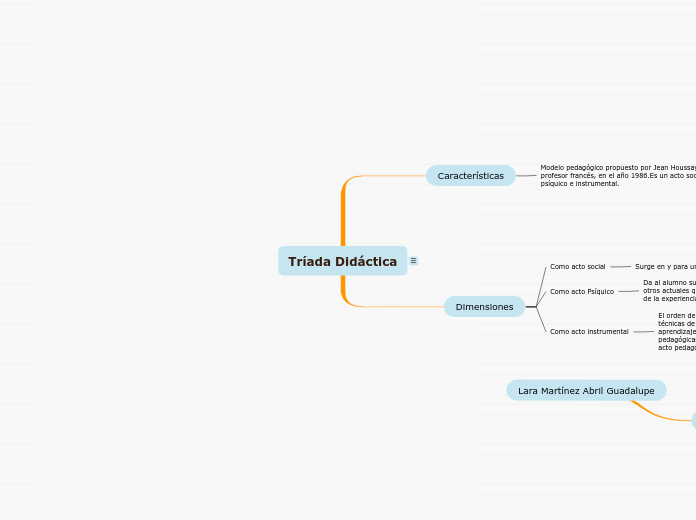a Abril LaraMtz 5 éve
709
Tríada Didáctica

a Abril LaraMtz 5 éve
709

Még több ilyen
Abril Guadalupe Lara Martínez 7C ACT. TRIADA DIDACTICA

To name your story, you have to think about the overall message and what you want your audience to understand from the story. Also, make it relevant and easy to remember.
The ending of a story is essential. We all know that if the ending is weak, what happened before loses its importance. So make it unpredictable, but fair. A resolved ending answers all the questions and ties up any loose threads from the plot.
Conjunto de información, datos, experiencias, teorías e ideas que el profesor transmitirá al alumno.
This is the closure section of the story.
See examples of possible outcomes below:
The middle of the story is where you add layers of complications that will lead to the end. Reveal more about the character's journey. Did their personality go through changes? How did they overcome the challenges? And as you build up the story’s central conflict, make it more personal to that character. Also, from the middle act, you have to lead into the final act.
El alumno aprende, adquiriendo un conocimiento que previamente no tenía, pero para ello debe mostrarse motivado y abierto al conocimiento.
There wouldn't be any tension and excitement in your story if there weren't any obstacles in your character's way.
In the beginning of the story (or the exposition), you will need to introduce the setting and characters. You might also want to introduce the main conflict. This part of the story is important because it gives the reader necessary background information and maybe even a first insight into a character’s personality.
Es la persona que transmite el conocimiento al alumno a través de una serie de estrategias educativas
Characters are essential to a good story. Usually, the protagonist(s) is/are the most affected by the plot. Introduce a character by focusing on their actions, interests, and occupation, as the physical appearance doesn't make a difference in most cases.